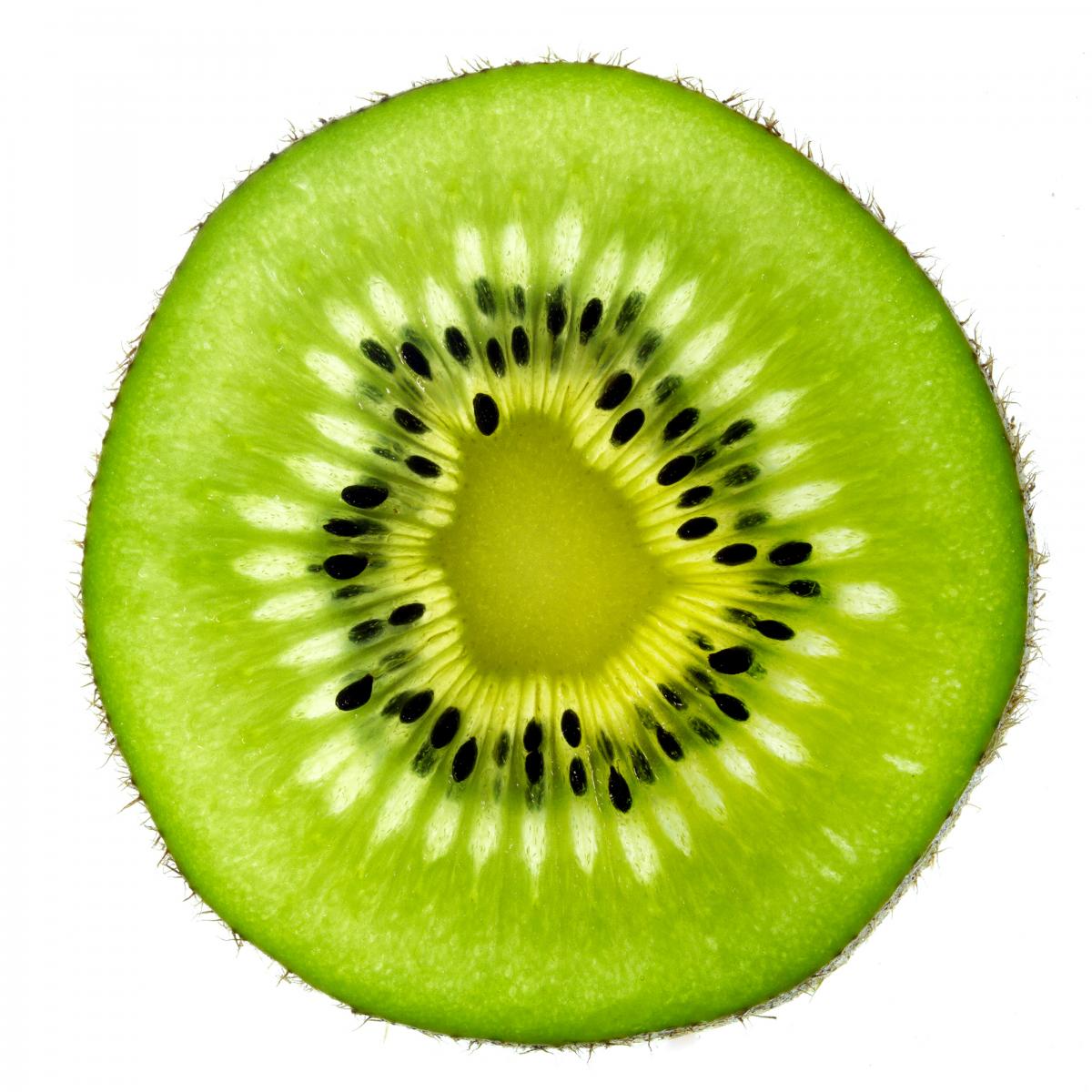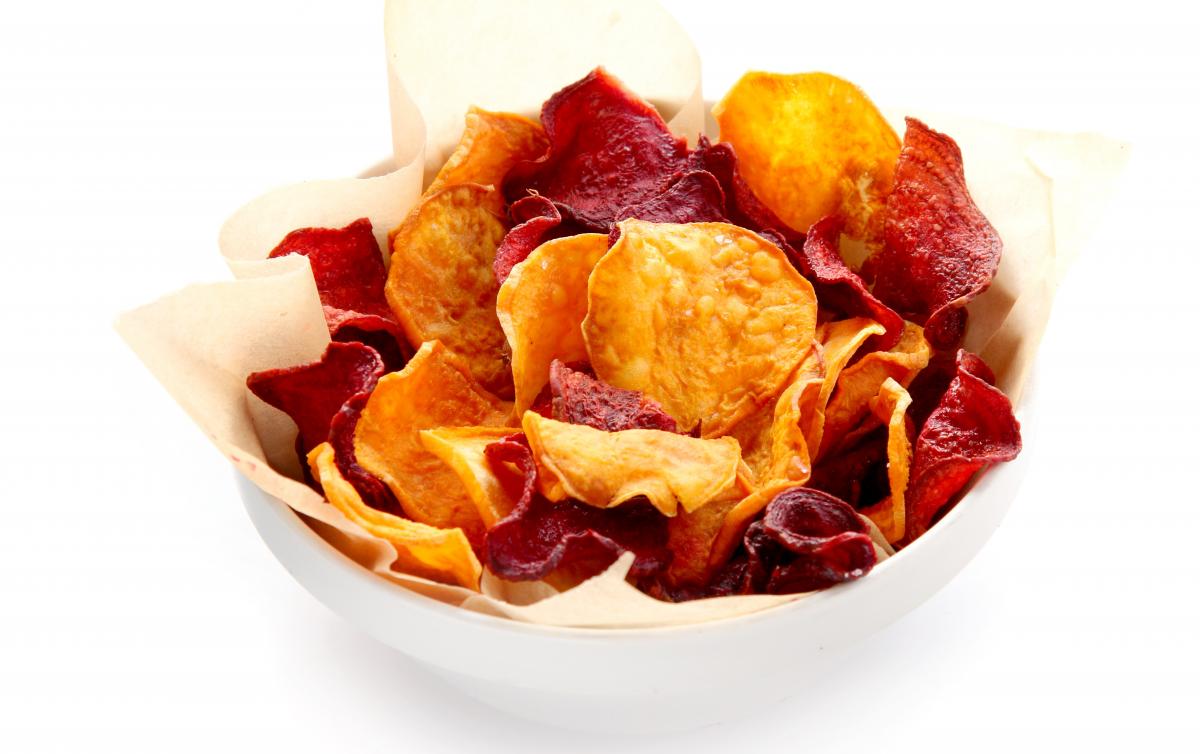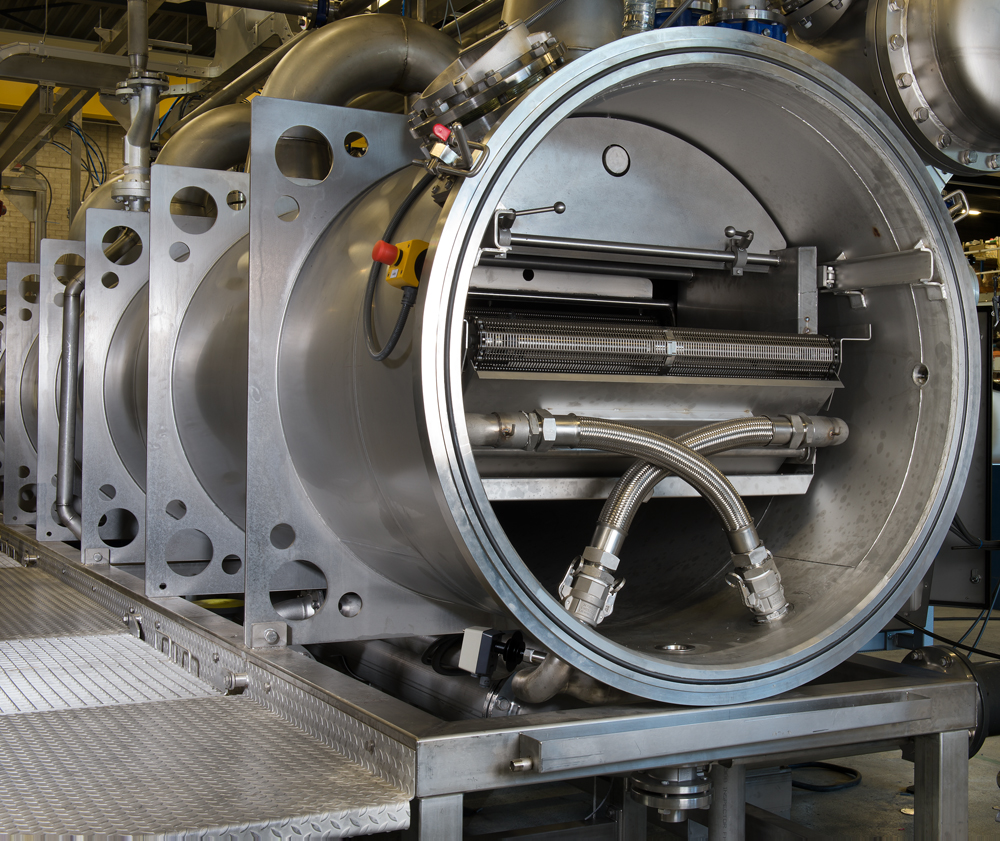SNACKING has become a way of life for consumers across the world, with the global savoury snacks market expected to reach over US$138 billion by 2020.1 Although savoury snack consumption in the Middle East is still primarily associated with indulgence, healthier snack alternatives are increasingly gaining in popularity in the processed snacks category.2 Snack manufacturers are catering to this demand by incorporating alternative ingredients and raw materials. In line with this, fruit and vegetable-based snacks are on the rise, as banana, kiwi, kale and coconut chips become increasingly popular among consumers.

Chips from fruits and vegetables that are high in natural sugars can be made in vacuum frying systems. Temperature-related reactions such as acrylamide formation are slowed down significantly and in some cases do not occur (Photo: Florigo)
As the trend towards ‘better-for-you’ products gains momentum, the demand for food that is readily available, tastes great and exhibits a desirable colour and texture remains high. As part of this, consumers look for foods that are ‘safer’ and have reduced fat content. Consequently, reducing fat absorption, preventing oil degradation and avoiding the formation of harmful chemicals, such as acrylamides, have become a priority for snack manufacturers. And with tightening government legislation calling for controlled levels of harmful fats and acrylamide in processed food, more and more manufacturers are reviewing their current processing methods. This has led to an increased level of equipment innovation as well as new product development (NPD) across the snack industry. Selecting the right ingredients and using cutting-edge manufacturing technologies can help snack producers benefit from these growing opportunities and maximise their growth potential.
Healthier fats for healthier snacks
Oil or fat is a key ingredient in most snack food production lines. Although the fats and/or oils that are absorbed by the raw material during the frying process provide the product with a unique taste and texture, limiting the absorption of unhealthy fats is vital for food manufacturers aiming to appeal to health-conscious consumers. Selecting the right type of oil is therefore essential.
From canola, sunflower and olive oil, to coconut and corn oil, manufacturers are inundated with choice. However, there are several considerations for snack manufacturers switching to healthier oils. Some types of oil create less harmful compounds but are not as stable at the heating stage, such as sunflower oil. This means they produce high levels of free radicals when they are heated, thus reducing the nutritional properties of the end product.
When an oil is less stable, shelf stability also becomes a significant concern. Oils that are rich in essential fatty acids and other polyunsaturated fats are the most fragile of oils. Because their longevity is generally shorter, snacks processed in healthier oils can become less stable over time. Furthermore, these generally cost more, due to their nutritional value and provenance. This means producers must find other ways to reduce spend, as well as increase total profits and production volumes.

Reduce fat from chips
Effective oil management practices
Oil quality is intrinsic to creating a healthy, high quality snack product. In most frying operations, the fatty acid level of the cooking oil will rise to an unacceptable level if the total volume of oil in the system cannot be turned over within a set time, resulting in inconsistencies in flavour and off-flavours. The most innovative frying technologies incorporate continuous filtration systems to help remove particulate material from the fryer during cooking. Typically, the oil is passed through a filtering system to remove both large and fine particles. The filtered oil is then blended with fresh oil and pumped back into the machine to return oil levels to the optimum level. An efficient oil turnover is critical in ensuring the product is cooked in the freshest oil, keeping free fatty acid levels to a minimum.
An evaluation of the oil management can help manufacturers identify opportunities to optimise their overall frying system. This includes regular maintenance of frying equipment, with emphasis placed on temperature controls, heating and heat transfer surfaces. Regular sanitation checks are also vital to ensure all food contact points are free of build-up. As such, they are able to produce cost effective snacks that not only look and taste great but which are “better for you” with prolonged shelf-life and superior flavours. In addition, more and more manufacturers are turning towards innovative frying technologies to minimise the challenges related to oil degradation.
Innovative frying technologies
Creativity is key in today’s snack industry. While there have been significant advancements in filtration technology, manufacturers also continue to look for new and innovative ways to fry their products. As a result, multi-stage frying, vacuum frying and batch frying are all increasingly used as methods for the creation of healthier snack products.
Multi-stage frying - also referred to as two-stage frying - is divided into two stages, atmospheric pre-frying and vacuum frying. Initially, the product is fried at a high temperature for a short amount of time to remove enzymes and sugars. The process is then completed at a lower temperature in a vacuum fryer. At this temperature, acrylamide formation is reduced, ensuring a safer, healthier end product.
The solution is ideal for producing regular potato and vegetable chips, including organic varieties and is compatible with a variety of oil types. Thanks to a much gentler process, the end product upholds the natural qualities of the raw material, including nutritional value, natural taste and colour, without the need for additives or colorants. At the same time, the process gives enough control to prevent discolouring such as browning or caramelisation. As a result, manufacturers are able to produce snacks with a distinctive taste and enhanced visual appeal.
Unlike multi-stage frying, vacuum frying continuously cooks products under a low temperature and low pressure conditions from start to finish. At these low temperatures, the degradation of the product’s surface structure is reduced, lowering the amount of oil absorbed and therefore enabling significant fat reduction with minimal impact on product quality. The low temperatures and the lack of oxygen present in the system also make it possible to use high quality, zero trans fat oil varieties leading to a longer shelf life and cost savings.

Florigo offers vacuum frying technology. The vacuum fryer continuously cooks products under low temperature and low pressure conditions. The process reduces degradation of the product’s surface structure, lowering the amount of oil absorbed (Photo: Florigo)
Vacuum frying systems are ideal for producing chips from fruit and vegetables that are high in natural sugars, such as parsnips, beets, carrots, apples, kiwifruit or mango, since temperature-related reactions, such as acrylamide formation, are slowed down significantly and in some cases do not occur. This allows producers to meet consumer trends for healthier and low fat products with positive organoleptic properties.
Batch frying systems equally help snack manufacturers to make the most of the heathy snacking trend. Frying at a temperature helps to seal the outside cells of the product, preventing oil absorption. This reduces oil uptake, allowing manufacturers to market their products as “reduced fat”. Batch frying also minimises acrylamide formation, maintains the desired crunchy texture and minimises colour formation and caramelization.
Partnering with an expert
Over recent years, the demand for healthier snack products has re-shaped the way manufacturers process food. Whilst this offers an array of opportunities, manufacturers are also faced with the challenge to produce healthier foods while still maintaining a profitable process.
In a world where innovation is key to success, the industry recognises the need for advanced frying technologies to help food producers cater to these challenges. As such, it is important to work with a supplier that has the technological expertise and know-how to find the right solutions to fit individual production requirements. Partnering with a leading processing solutions supplier like Florigo (from tna) gives food manufacturers the ability to do just that and ultimately stand out from the competition in this dynamic and constantly evolving market.
1Global Savoury Snacks Report; Analysis of opportunities offered by high growth economies, Canadean (August 2016)
2Consumer and Market Insights: Savoury Snacks in Egypt, Canadean (June 2016)
*ARNAUD JANSSE is a food technologist at leading processing equipment supplier, Florigo (from tna)
Air Jordan X 10 Shoes
 iConnectHub
iConnectHub
 Login/Register
Login/Register Supplier Login
Supplier Login


























